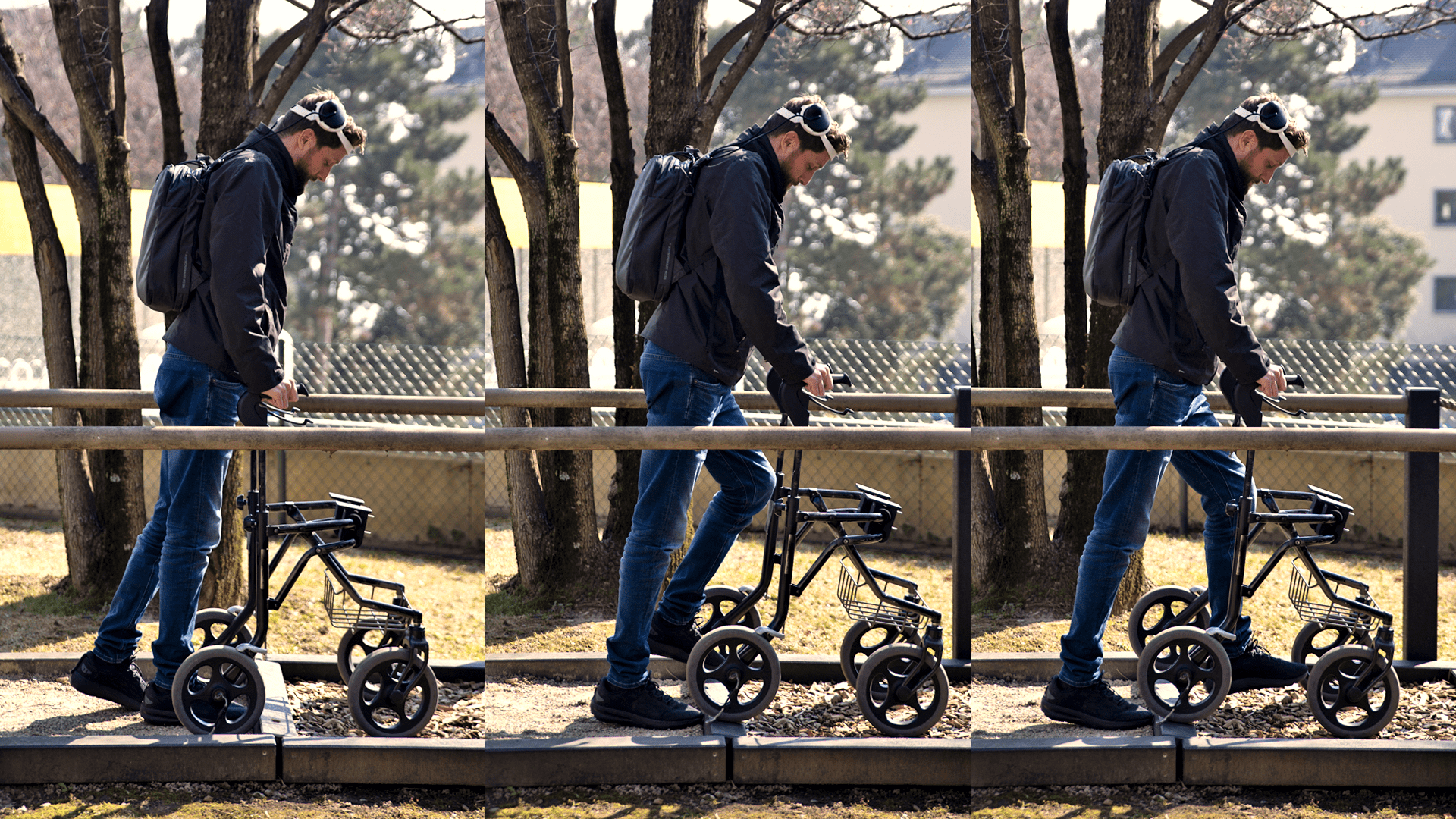A man whose legs had been paralyzed for a decade due to a spinal cord injury has been able to walk again, after treatment with a revolutionary new implant. The device helps to bridge the gap between the brain and the spinal nerves that control movement, restoring communication that was interrupted by the patient’s injury. Not only that, but rehabilitation therapy undertaken whilst using the device has worked so well that the patient is now able to walk with crutches even when the implant is switched off.
The new brain-spine interface (BSI) was developed by Grégoire Courtine, Professor of Neuroscience at EPFL, CHUV and UNIL in Switzerland, and colleagues in a multidisciplinary team. “We have created a wireless interface between the brain and the spinal cord using brain-computer interface (BCI) technology that transforms thought into action,” Courtine summarized in a statement seen by IFLScience.
The patient involved in this pioneering study, Gert-Jam Oskam, was recruited at the age of 38, having sustained a spinal cord injury in a cycling accident 10 years prior that had paralyzed his legs. The aim of the treatment was to bypass the area of injury, creating a “digital bridge” between Oskam’s brain and the spinal cord.
“We have implanted […] devices above the region of the brain that is responsible for controlling leg movements. These devices […] decode the electrical signals generated by the brain when we think about walking. We also positioned a neurostimulator connected to an electrode array over the region of the spinal cord that controls leg movement,” explained neurosurgeon Jocelyne Bloch.
Once implanted, the BSI was able to calibrate astoundingly quickly, in just a few minutes. It was not long before Oskam was able to regain some control over the paralyzed muscles, and the results continued to improve.
The BSI has now remained stable for over a year, allowing Oskam to stand, walk, climb stairs, and navigate complex terrain that never would have been possible before.
Remarkably, he has also undergone further neurorehabilitation whilst using the device, and all the indications suggest that new nerve connections have started to develop – in other words, to some degree at least, the injured spinal cord has begun to recover. Even with the BSI switched off, it has been possible for Oskam to walk with the aid of crutches.

Even complex terrain, with steps and different surfaces, is no problem thanks to the BSI.
Image credit: Jimmy Ravier
Previous approaches have looked to electrical stimulation to restore movement after paralysis. Indeed, Oskam himself had participated in a five-month trial before the BSI was implanted, which involved epidural stimulation of the spinal cord coupled with a rehab program. While these procedures have shown some success, there are limits – patients are required to wear motion sensors, and the tech cannot easily allow them to compensate for changes in the terrain they need to navigate.
It’s still early days for the BSI, as this is its first test in a human. However, Courtine and Bloch are confident that the approach could be adapted for other spinal cord injuries, such as those where the arms and hands become paralyzed, as well as paralysis from other causes, like stroke. Funding has already been secured for the development of a commercial version of the BSI, with the hopes it will eventually be made available to patients worldwide.
For Oskam, though, after the groundbreaking surgery and all the hard work of rehabilitation, it’s the small things many of us take for granted that he highlights. Speaking of how he is once again able to stand at a bar and share a drink with his friends, he said: “This simple pleasure represents a significant change in my life.”
The study is published in Nature.
Source Link: Paralyzed Patient Walks Again Thanks To Breakthrough Implant Treatment